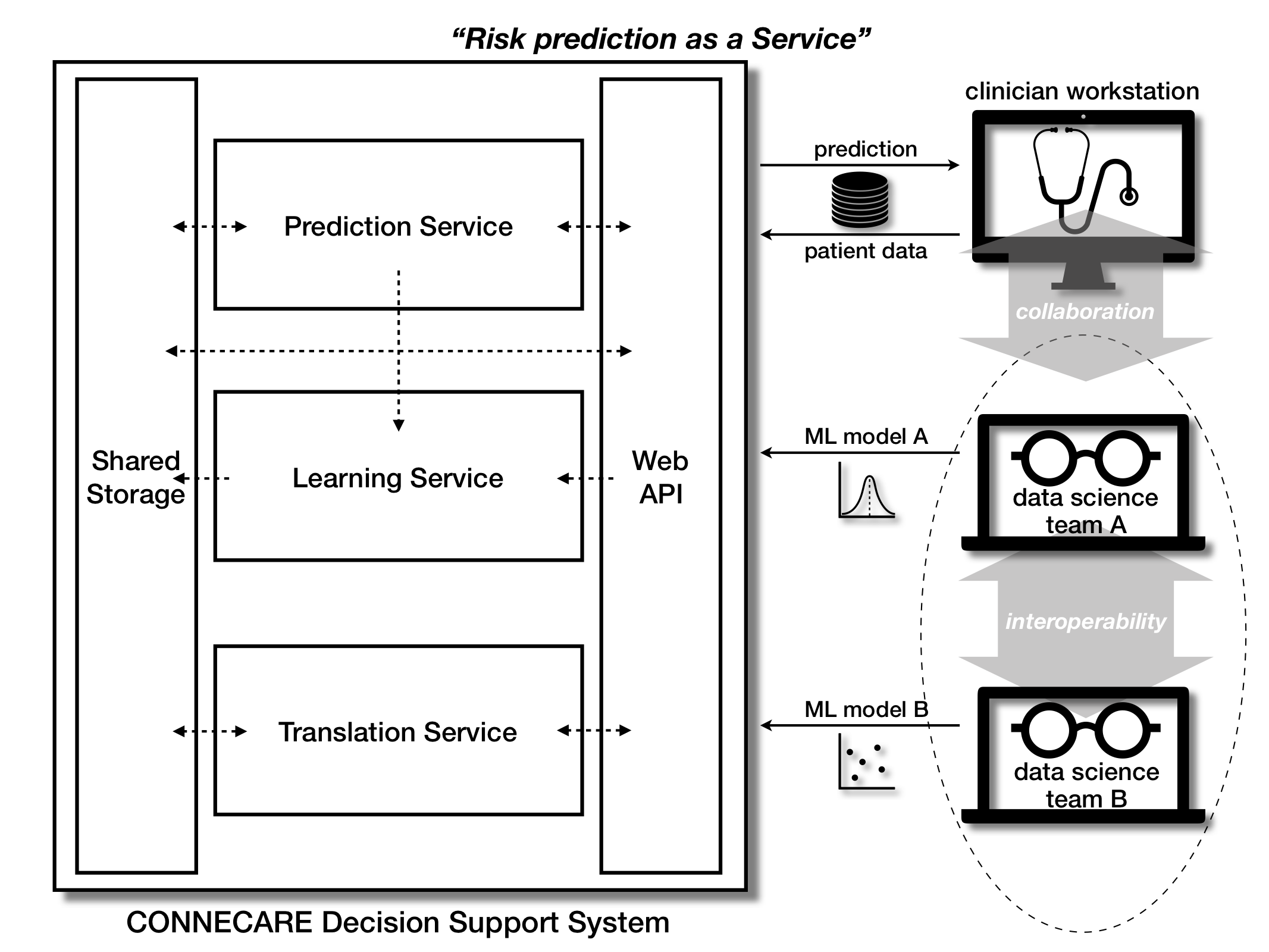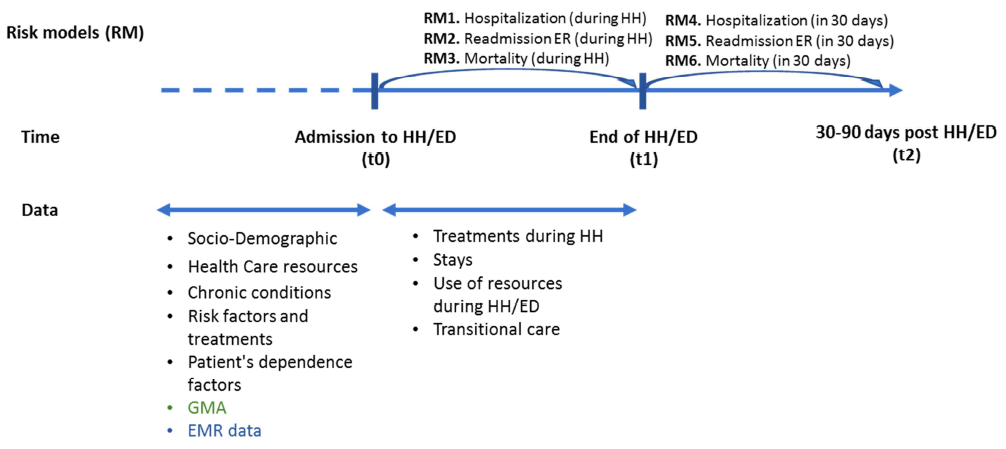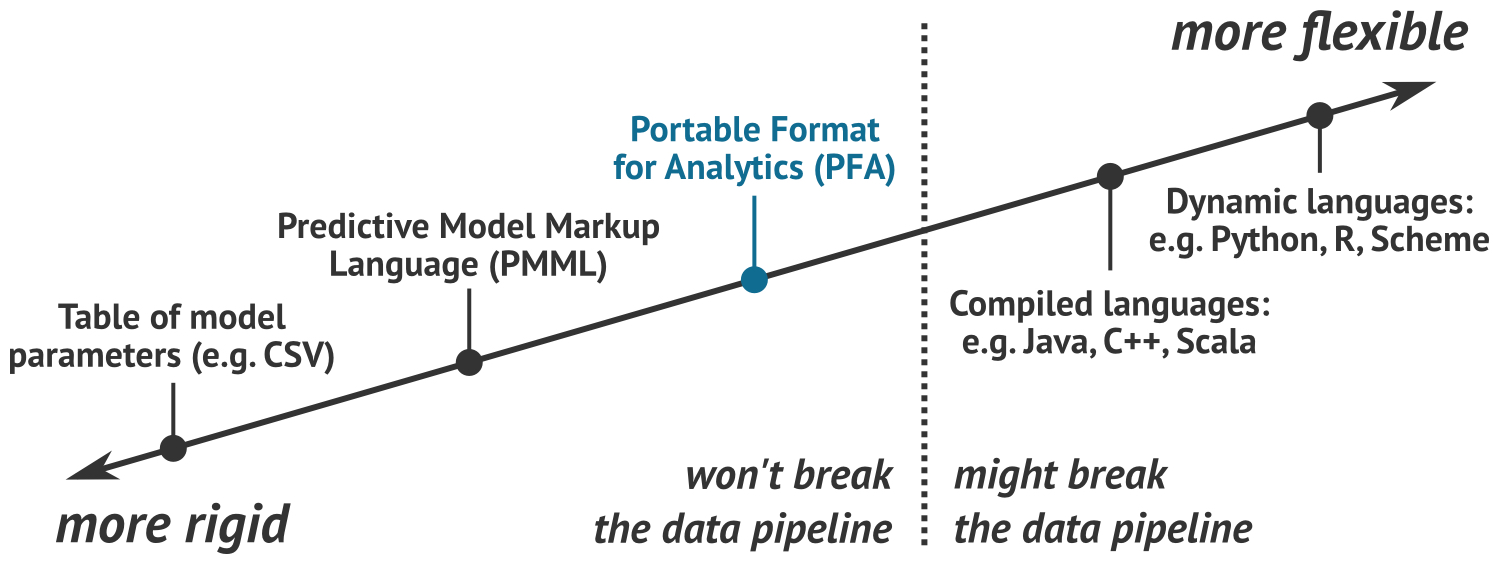Risk Prediction
as a Service:
a DSS architecture promoting
interoperability and collaboration
Università di Modena e Reggio Emilia
Outline
- Scenario
- Proposition
- Enabling technologies
- Application
Scenario
- Growing ICT impact on clinical practice and research
- ML >> predictive modelling >> decision support
- i.e. risk prediction
- Barriers to overcome
- standards
- technological development
Use cases
- Data science teams want to join efforts for better predictive models
- geographical distribution >> remote collaboration only
- different organisations >> data sharing cumbersome
- different technical skills >> sharing code barely useful
- Clinical staff wants to experiment predictive modeling
- lacks IT resources >> up-front investment
- lacks IT skills >> steep learning curve
- Healthcare organisations want to assess transferability of models
- lack reciprocal trust >> no data disclosure
- different technical skills >> incompatible models
Proposition
Ubiquitous access & seamless deployment
of prediction models.
Interoperability & collaboration
between data science teams and, possibly, clinicians.
Architecture

Web API: RESTful endpoints
Translation: R/Python models to PMML/PFA
Prediction: Serve predictions
Learning: Build prediction models
Storage: Store models
Functionalities
- Plugin mode:
- upload model
- list models
- inspect model (metadata)
- download model
- delete model
- apply model
- Learning mode:
- train model
- test model
- save model (freeze)
- discard model
- Common:
- set global (usable anywhere vs. provider site)
- set online (learning on new data vs. "frozen")
Non-functional Properties
Trust: local validation + transparency (inspection)
Language / framework agnostic: automatic translation + PMML/PFA (R, caret + Python, scikit-learn)
Interoperability: PMML/PFA, HTTP API, JSON/XML data
Accessibility: Web Service, REST architecture
Enabling technologies
- "X-as-a-Service" paradigm
- especially: "ML-as-a-Service" (MLaaS)
- Standards promoting seamless exchange and deployment of ML models
- don't brake the data pipeline
- language / framework agnostic >> "build once, run everywhere"
Service Orientation
- "as-a-Service" paradigm to deliver software products
- roots in Service Oriented Architecture (~90s)
- well-known implementation: Web Services (~2000s)
- modern evolution: RESTful micro-services (~2010s)
- MLaaS growing trend
- i.e. IBM Watson ML, Amazon SageMaker, MS Azure ML Studio, Google Cloud ML Engine
- off-the-shelf solutions : wide portfolio of models, customisation options, user friendly
- lack focus on serving models (i.e. IBM MAX)
PMML / PFA
- Predictive Model Markup Language
- ML models representation format based on XML
- Portable Format for Analytics
- ML pipelines representation format based on JSON
independent development / deployment of predictive models
flexibility of production environment
co-existence of different programming languages and frameworks
Application
- Architecture implemented in CONNECARE European project
- Predictions about hospitalisations, emergency re-admissions, mortality
- Models created by partners with locally available data (6000+ patients with 5+ years follow-ups)
- DSS as precious asset to let clinical partners
- use and validate each other models
- cooperatively improve models without data sharing
- assess transferability
Risk Prediction

Home Hospitalisation (HH) / Early Discharge (ED)
- During HH / ED (t0) >> stratify patients to optimise care (Risk Models 1-3)
- risk of early readmission after hospital discharge
- risk of mortality
- after HH / ED (t1) >> stratify patients for transitional care (Risk Models 4-6)
- risk of early readmission after hospital discharge
- risk of mortality
Conclusion
Reference architecture for a DSS, promoting
- interoperability amongst technological environments
- collaboration between teams of data scientists, and towards clinical staff
State of art tech + ML standards = support to practical use cases
- service-orientation, REST architecture
- PMML and PFA data formats
Running implementation within CONNECARE
- clinical case studies ending after summer >> assessment of DSS efficacy
- CONNECARE ending Dec 2019 >> DSS released as open-source
Thanks
for your attention
Questions?
Università di Modena e Reggio Emilia
